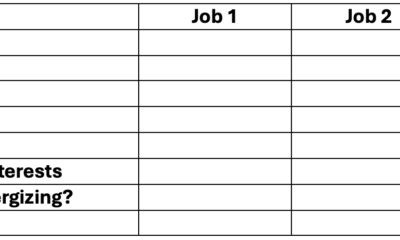Business Planning
Porter’s Five Forces: The Ultimate Competitive Strategy Blueprint

Gaining a Competitive Edge with Porter’s Five Forces Framework
Gaining a competitive edge is vital yet challenging in today’s disruptive business landscape. With cut-throat rivalry and fluid industry boundaries, organizations must continually assess their strategic position to sustain profitable growth. An indispensable strategy framework that helps decode competitive dynamics for actionable insights is Porter’s Five Forces.
Introduced in 1979 by Harvard professor Michael E. Porter, this framework empowers businesses to dissect their industry structure to formulate enduring business strategies. By examining five central competitive forces, companies can identify opportunities, navigate threats, and craft differentiated value propositions.
This article will demystify Porter’s Five Forces, how they affect profitability, real-world examples, and implementation strategies.
What is Porter’s Five Forces Framework?
Porter’s model examines five key forces that shape the long-term profitability potential of market sectors. By considering the cumulative impact of these forces that pervade industry environments, organizations can devise more resilient positions within competitive landscapes.
Let’s explore each force in-depth.
1. Competitive Rivalry
Arguably the most apparent of Porter’s forces, competitive rivalry refers to jostling between direct competitors vying for a greater share of demand and profits in a given market. The degree of rivalry is dictated by factors such as the number of competitors, industry growth rates, product differentiation, and high exit barriers.
For example, a sector like restaurants has always attracted intense competition with low entry barriers, similar offerings, and extreme volatility as disposable incomes fluctuate. This creates a perennial fight for customer share and the lifecycle of eateries.
2. Bargaining Power of Suppliers
Every business depends on suppliers – vendors, partners, or distribution intermediaries – controlling access to vital inputs from components to labor. Powerful suppliers can squeeze industry profitability by restricting quality or availability, hiking input prices, and forward integrating themselves into purchasers’ value chains.
Consider the power imbalance between automotive giants and semiconductor chip suppliers. Though automotive is a trillion-dollar industry, chip fabrication for use in vehicles is an oligopoly. With restricted competition and specialization, semiconductor suppliers wield huge influence over automakers as the latter’s manufacturing hinges on timely chip supply despite the overall demand dynamics.
3. Bargaining Power of Buyers
Buyers also pressure companies by demanding reduced prices, premium quality, added services, etc. Buyer power intensifies when purchasing is concentrated, switching is simple, buyers are price-sensitive, and forward integration viabilities exist.
For instance, big-box retailers like Walmart and Target source such massive volumes that they can negotiate exceptional bulk discounts from consumer goods companies. They then leverage rock-bottom procurement costs towards everyday low pricing that captures mainstream buyers through significant savings.
4. Threat of Substitution
All offerings have alternatives that curb industry profits when they offer greater value along dimensions like affordability, quality, or convenience. Key drivers of substitution threats include comparable functionality, aggressive pricing, higher utility, and latent alternatives.
For example, digital distribution channels like Netflix and Spotify rapidly replaced physical video and audio rentals through on-demand convenience and lower access costs.
5. Threat of New Entrants
New entrants are drawn towards lucrative sectors, expanding output levels and aiming to grab market share. Factors dampening the influence of new players include supply economics, brand loyalty, capital costs, and regulation.
Illustratively, the automotive sector has scaled over decades of consolidation and capital investments around manufacturing, design, and distribution. Combined with loyal brand followings and safety regulations, new automaker market entry involves surmounting immense challenges despite competitive dynamics seeming conducive.
Real-Life Examples of Porter’s Framework
These illustrations across diverse sectors demonstrate nuanced applications of the five forces analysis tailored to respective industry situations.
- Higher Education Industry: A five forces scrutiny highlights limited rivalry amidst barriers slowing substitute adoptions and new entrants. However, student anxieties push continual innovation and support investments.
- Music Industry: As streaming services commoditize music access, intensifying competition contrasts with the creative monopolies enjoyed by powerful artists and labels controlling unique offerings.
- Retail Industry: Retail battles happen across integrated channels now as big-box stores, discount chains, and e-tailers fight growing buyer power in a maturing industry with constant store-level churn despite entry barriers.
- Transportation Industry: The influx of ride-sharing platforms like Uber, despite taxi and rental incumbency, led to bitter, sometimes ugly competition. Technology shifts likely keep powering more platform disruption despite regulatory attempts at protectionism.
Porter’s Strategy Fundamentals
After diagnosing competitive forces, the key is responding strategically to industry realities. Famed business strategy guru Michael Porter suggests considering one of three generic approaches to outcompete rivals: Cost Leadership, Differentiation, and Niche Focus.
Beyond picking an orientation, executing strategy involves holistic decision-making across management dimensions spanning resource allocation, product mix optimization, partnerships, customer experience, and capability building around the chosen approach.
Common Pitfalls in Analyzing Five Forces
While assessing implications from the five forces of scrutiny, be wary of superficial evaluations. Guard against common pitfalls such as ignoring interdependencies, limited stakeholder research, no actionable strategizing, and definitional disjoints.
Analyzing Five Forces Critiques
Enduring and insightful, Porter’s model still attracts its share of critiques. Let’s examine the key arguments leveled: Static Assessment, Company-Agnostic, Qualitative Over-Reliance, and Blends Overlooked.
Ultimately, the strategy remains contingent on appropriately reacting to prevailing industry forces. Contextual applications and tactical responsiveness hold the keys to utilizing Porter’s Five Forces effectively.
Conclusion
Despite modern criticisms and limitations, Porter’s Five Forces remains an incisive starting point for informed strategy formulation. Mastering Porter’s foundational framework is indispensable for cementing competitive advantage in turbulent times.
-

 Professional Development1 month ago
Professional Development1 month agoDrawing up your strategy
-

 Personal Growth2 months ago
Personal Growth2 months agoSucceeding as a ‘parentpreneur’: Top tips
-

 Videos2 months ago
Videos2 months agoGreat Leaders INSPIRE Others To Do Great Things
-

 Productivity1 month ago
Productivity1 month agoHow to Increase Remote Work Productivity
-

 Productivity2 months ago
Productivity2 months agoTips for Boosting Work Productivity
-

 Productivity2 months ago
Productivity2 months ago5 Ways to Increase Your Personal Assistant’s Productivity
-

 Leadership1 month ago
Leadership1 month agoHow to Tackle Big Challenges
-
Leadership1 month ago
Cutting Through the Clutter of Internal Communications































